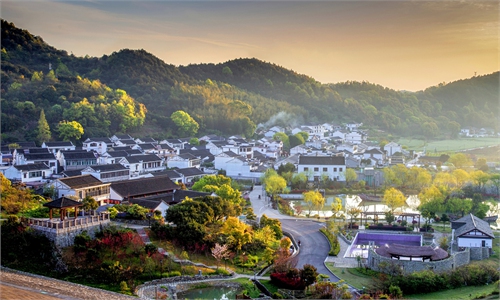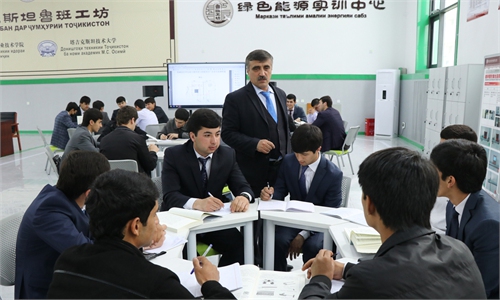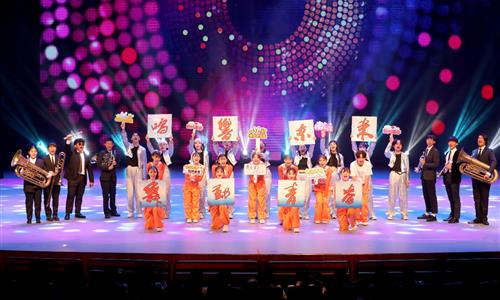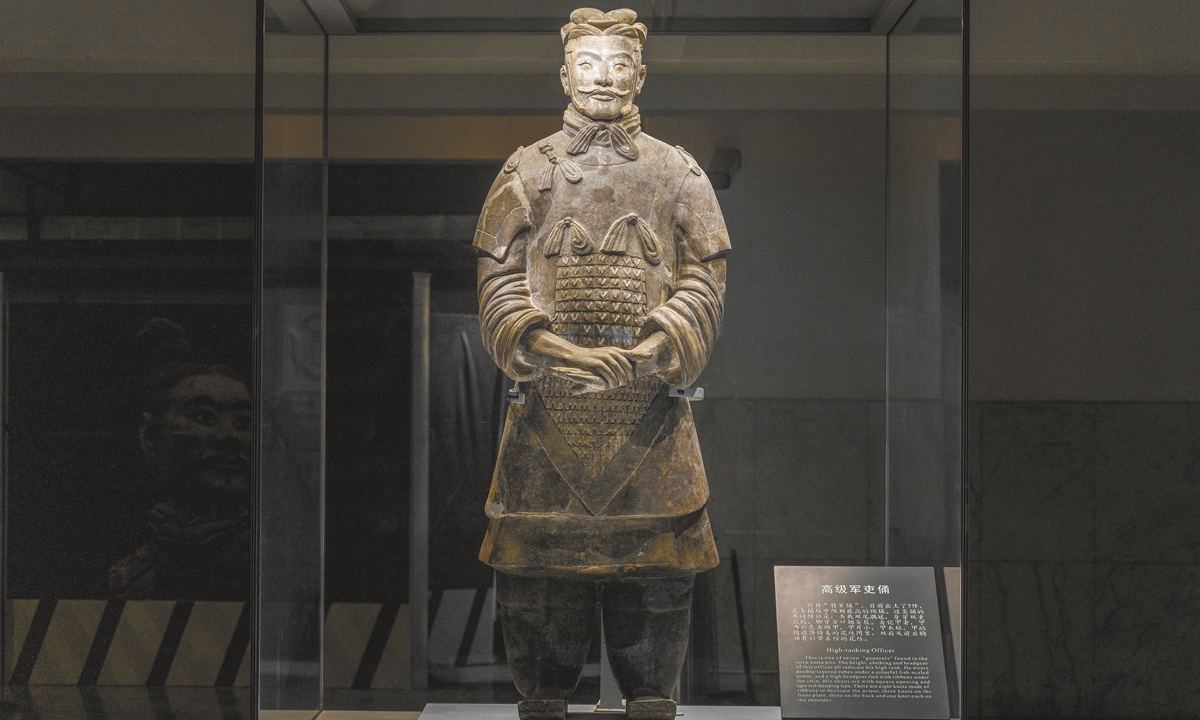
A terracotta warrior unearthed from the Qinshihuang's mausoleum Photo: VCG
Vivid Terracotta Warriors in different poses, and intricately designed stone armor... A total of 230 artifacts are on display at an exhibition that kicked off on September 8 in Xi'an, Northwest China's Shaanxi Province, to commemorate the 50th anniversary of the discovery of the Terracotta Warriors and the 45th anniversary of the establishment of the Emperor Qinshihuang's Mausoleum Site Museum.
About one third of the exhibits are on public display for the first time, the museum told the Global Times.
The rare and precious exhibits include a bronze waterfowl, the first of its kind from the Qin era, and a bronze bell confirming the historical name of the Qinshihuang Mausoleum as the "Lishan Garden."
These artifacts demonstrate the richness of the underground kingdom at the Qinshihuang Mausoleum and offer an opportunity for visitors to get a glimpse into the grandeur of the Qin Dynasty .
In 1974, a few farmers in Xiyang village, Lintong county in Shaanxi Province, accidentally unearthed some clay fragments while digging a well.
Yuan Zhongyi, a renowned Chinese archaeologist who is dubbed "the father of the Terracotta Warriors," told media that he never expected that the fragments would lead to any significant discoveries.
"We never imagined the pit would be so huge. The No.1 pit alone turned out to cover an area of more than 14,000 square meters," Yuan was quoted by media as saying.
After 50 years of excavation and research efforts, 149 burial pits have been discovered, including a bronze chariot pit, the rare birds pits, small and large barn pits, a stone armor pit, the warriors and horses pits and other sacrificial pits. All those together build a massive treasure house, according to the museum.
In total, the mausoleum of Emperor Qinshihuang covers an area of 56.25 square kilometers. It took about 38 years and around 720,000 laborers to build, standing as the grandest tomb with the richest burial objects among all the imperial tombs throughout Chinese history.
The magnificent underground kingdom was declared a major historical and culture site protected at the national level and was added to the UNESCO World Heritage List in 1987.
So far, the site and the museum have received over 160 million visitors, including more than 11 million in 2023. More than 270 exhibitions featuring the Terracotta Warriors have been displayed in more than 50 countries and regions.
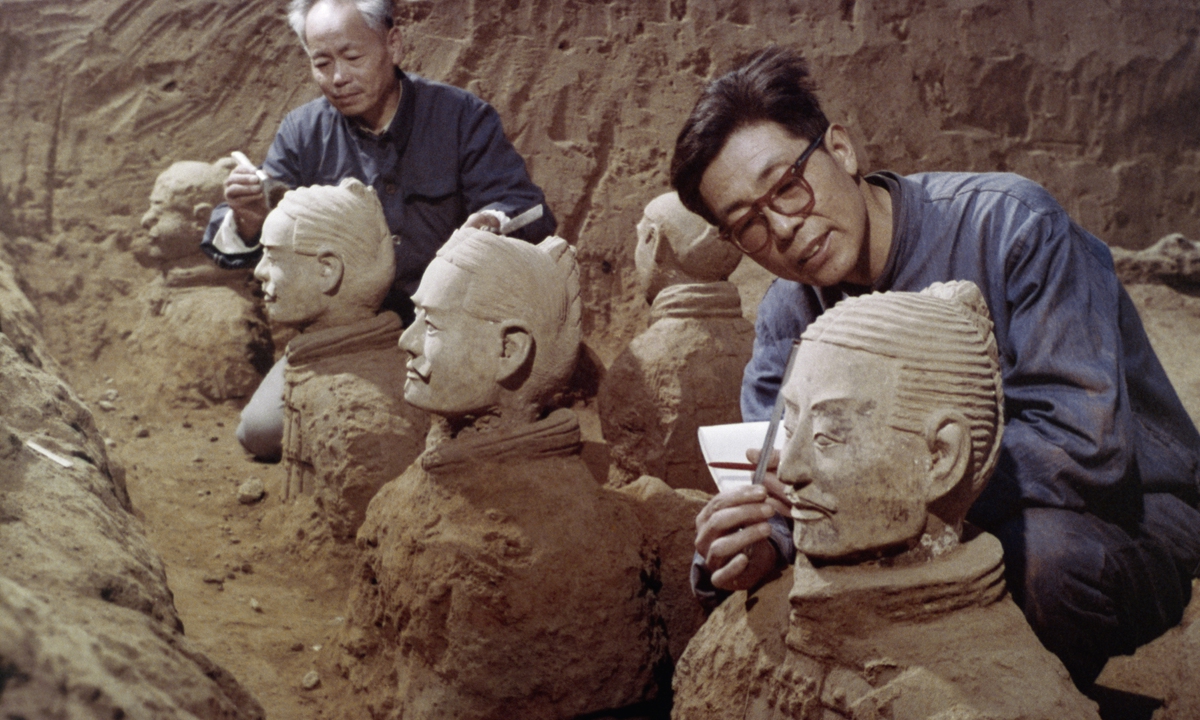
Archaeologist Yuan Zhongyi, dubbed "the father of terracotta warriors," works at the Qinshihuang's mausoleum site in September 1979. Photo: VCG
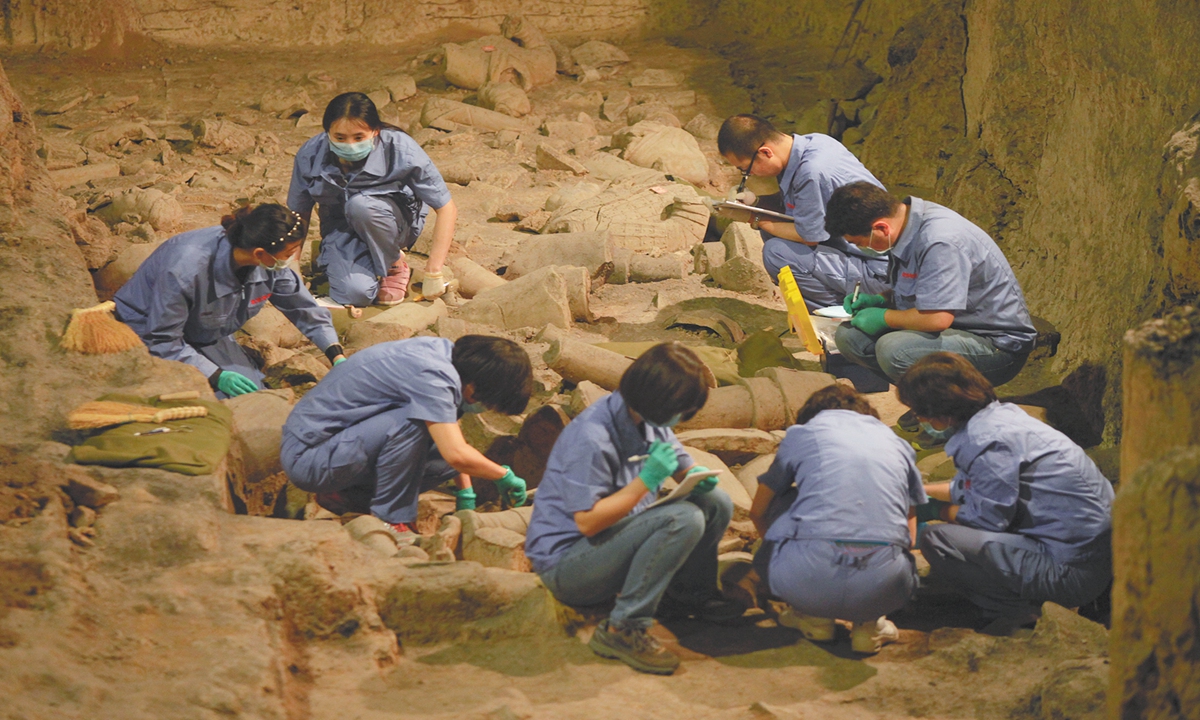
Archaeologists work on an excavation site of terracotta warriors in Xi'an, Northwest Chiuna's Shaanxi Province, on April 30, 2015. China launched a second excavation project that day on Pit No.2 of Qinshihuang's mausoleum. Photo: VCG
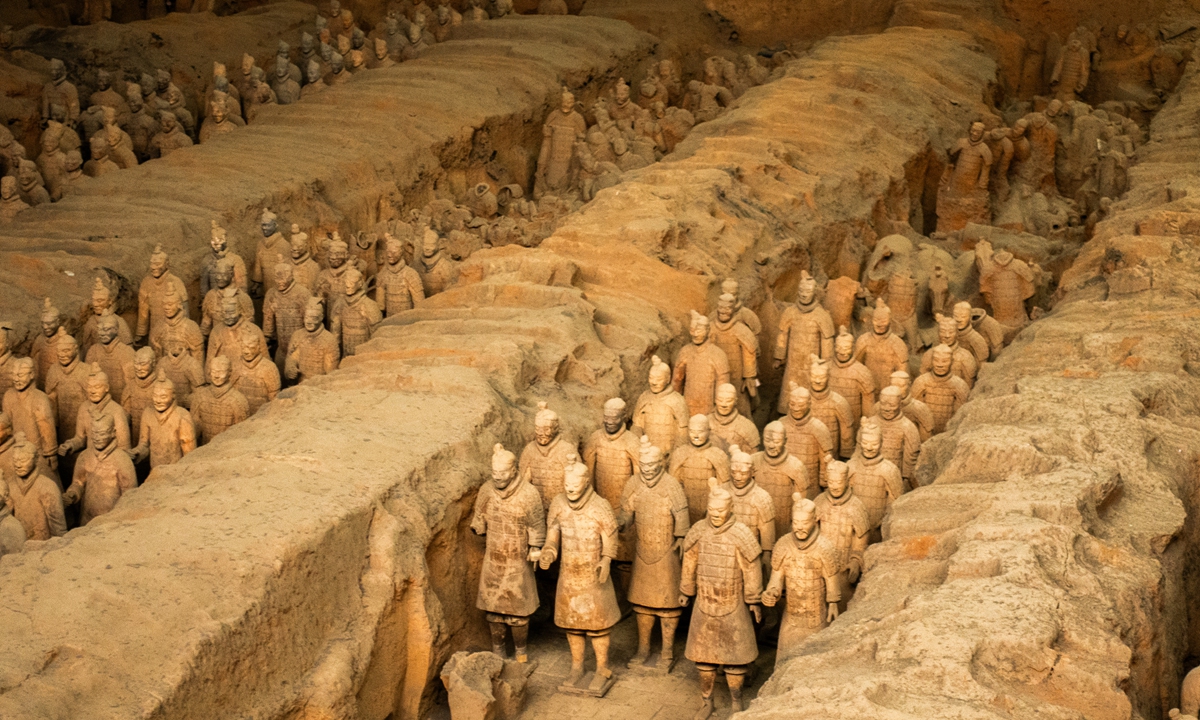
Terracotta warriots Photo: VCG
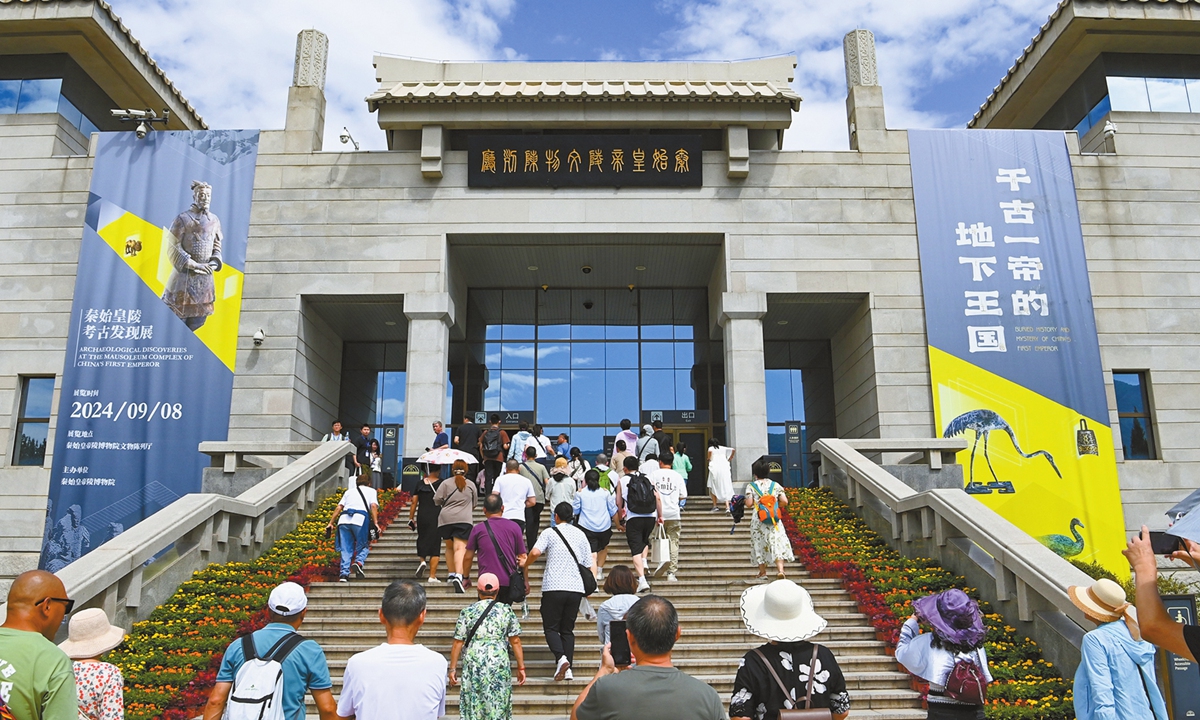
Visitors flood to the Emperor Qinshihuang's Mausoleum Site Museum for the exhibition in Xi'an to commemorate the 50th anniversary of the discovery of the Terracotta Warriors. Photo: Courtesy of Emperor Qinshihuang's Mausoleum Site
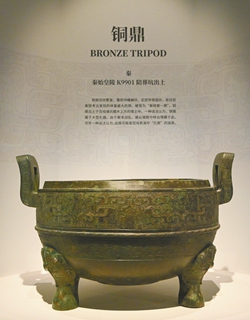
A bronze tripod, the first of its kind from Qin Dynasty, is on display at the exhibition in Xi'an to commemorate the 50th anniversary of the discovery of the Terracotta Warriors. Photo: Courtesy of Emperor Qinshihuang's Mausoleum Site Museum
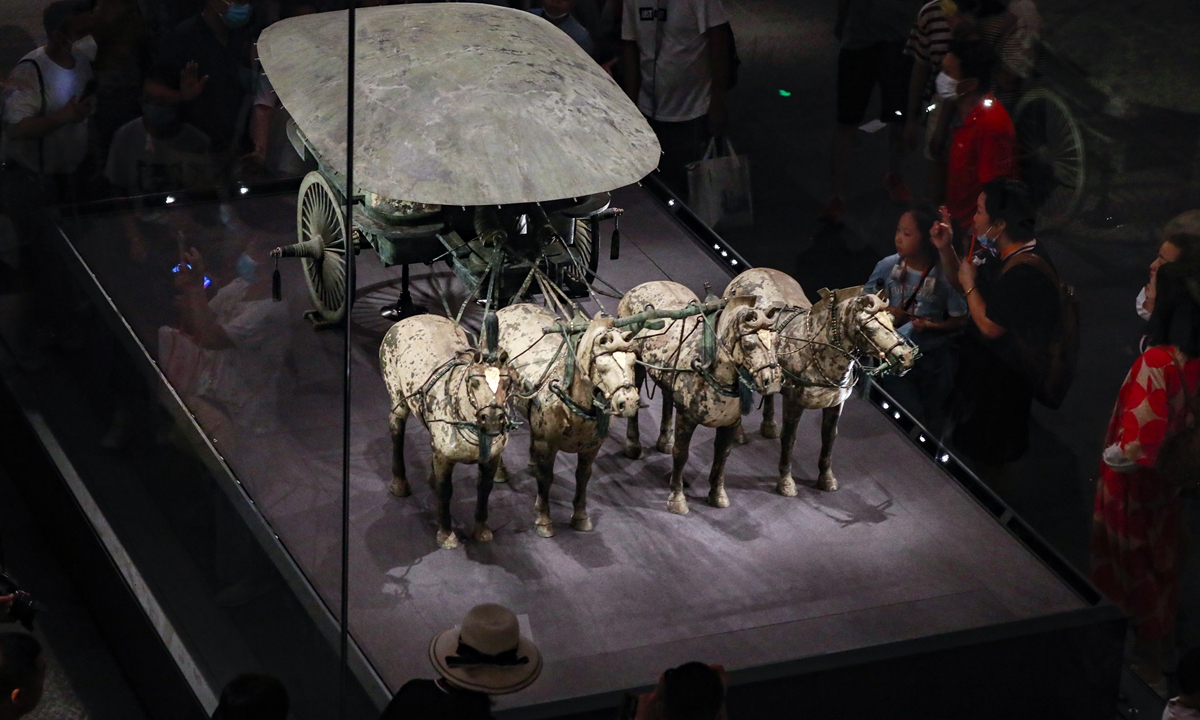
A set of bronze chariot and horses unearthed from the Qinshihuang's mausoleum Photo: VCG
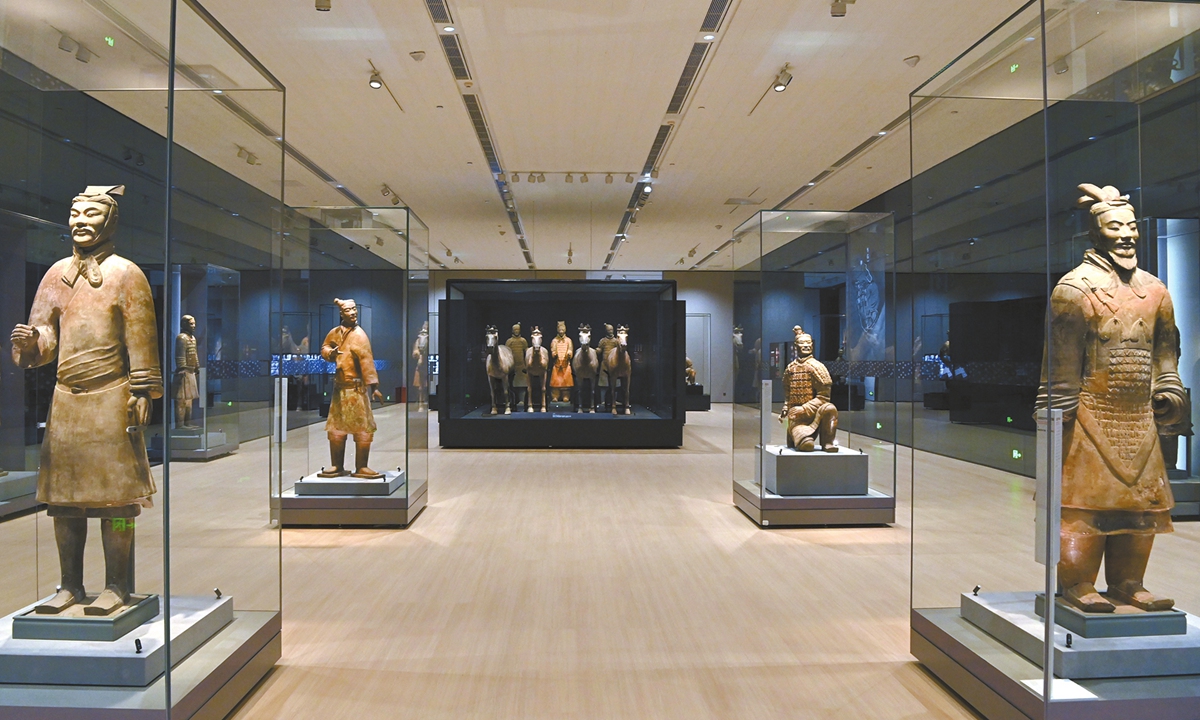
Terracotta warriors are on display at the exhibition in Xi'an to commemorate the 50th anniversary of the discovery of the Terracotta Warriors. Photo: Courtesy of Emperor Qinshihuang's Mausoleum Site
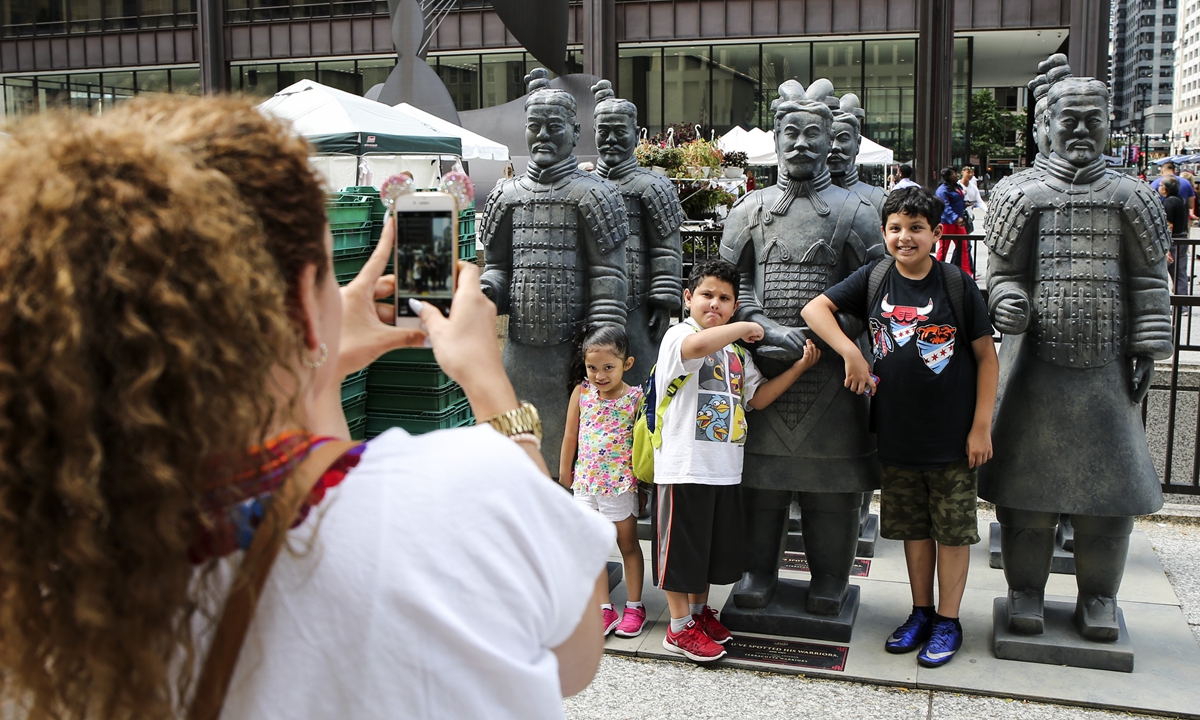
People take photo with replicas of terracotta warriors in Chicago, the US, on July 14, 2016, during the exhibition of ten original terracotta warriors at the Field Museum from July 2016 to January 2017. Photo: VCG

